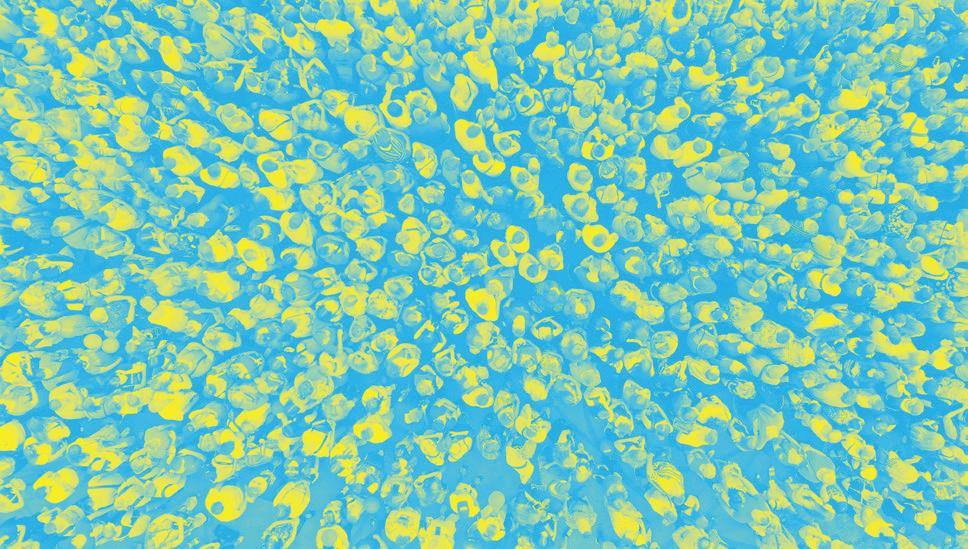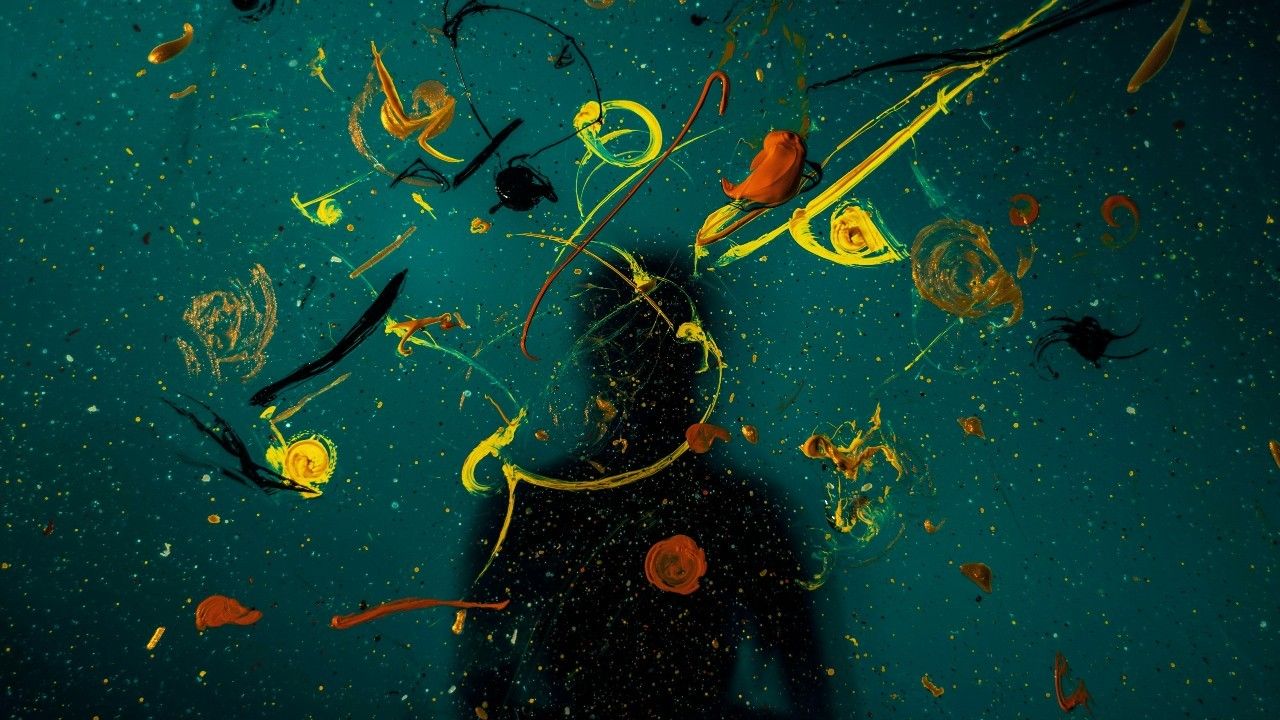On December 19, 2013, Jeanine Oleson published a piece on the Civilians Blogspot account. In her short essay, Oleson offered a selection of videos and ideas–the psychic source material for her forthcoming experimental opera. These materials were wide-ranging in nature, from the Svalbard Global Seed Bank to a video of vocal cords in motion, and among this virtual charcuterie, near the top, was a video of Fran Leibowitz. “In order to be a writer,” Leibowitz says in the clip, “you have to know things.” Most writers, I think, would disagree with that statement, especially those whose paths cross with the Civilians. In chronicling the wild and winding history of the R&D group, it’s clear that being a writer, or generative artist of any kind, requires a deep love of not knowing and a great appetite for finding things out.
On the Civilians website, under R&D group, you’ll find this blurb:
The Civilians’ R&D Group meets biweekly for nine months, during which time each artist or team of artists develops a new piece of theater through a creative investigation of a topic chosen by each artist. The creative process may include interviewing, community engagement, research, or other experimental methods of inquiry.
But what does this mean? After all, residencies and writers groups are mysterious organisms. What happens in them? How do you get into one? And most, importantly, where do they come from? The answer is: a desire for collaborators and the presence of available meeting spaces.
In the Beginning…
The Research and Development Group started as the brainchild of Artistic Director Steve Cosson and initially featured artists who were either Civilians aligned or curious about the Civilians’ work and process. There were no applications then, nor was there much of a budget. It’s mind-boggling to think that R&D, which was at one point home to artists like Jackie Sibblies Drury, Andrew Butler, Samuel Hunter, César Alvarez, Grace McClean and Heidi Schreck, began as a bunch of people in a room who had to bring their own snacks. EllaRose Chary, R&D coordinator from 2012-2015, explains that in the beginning, the dearth of snacks wasn’t the only funky part. “There was no money,” she laughs. “No pencils, highlighters or binders.”
Eventually, the artistic team realized the current situation was untenable and devised a formalized application process. After putting out a call for proposals, 150 R&D hopefuls appeared with paragraphs about the projects they hoped to create. Musical theater folks, visual artists, directors, multi-disciplinary artists, playwrights: creators of all kinds wanted to be in the orbit of the Civilians. This influx of applications introduced Cl]hary to a new challenge—deciding what constituted as investigative work and therefore, how the program would function as a structured entity. The specific question that she and Cosson asked themselves was, “What counts as investigative theater?” The Civilians, after all, are a company whose ethos is based on testimonial as source material. But like many methodologies of choice, theirs too was in flux. R&D became a laboratory for the Civilians to refine the definition of investigative theater, as the group itself refined into the form we know and love today.
Once R&D sharpened its sense of self, the project was met with funding. Not a lot, but enough for office supplies and a $25/meeting stipend for, you guessed it: snacks. The Findings series emerged for people to show their work, in addition to concurrent cabarets at Joe’s Pub and collaborations with New York City Center. Beyond the opportunities to collect and create, however, the group had a certain je ne sais quoi borne from something more intangible. Yes, R&D provided showings that members could invite producers and potential collaborators to, but it also offered writers an “artistic home“ where “people [took] them seriously.” And, as Chary points out, “The caliber of artists in the room was always so high.”
A few years later, Chary became an artist in the room herself. Ilana Becker, who stewarded R&D through its pandemic chapter, participated in R&D first as a director, later on, as a playwright, and finally as program coordinator. This fluidity and multiplicity of roles that R&D allows for shouldn’t be surprising—we’re talking about theater after all—but in a world where people are often expected to box themselves in so as to be digestible, it was refreshing to hear Becker’s experience with the Civilians. Before that, however, we (I) must try to stick to the timeline, which brings us to the 2015-2019, or what some might call, the Megan McClain administration.
The Writer to Community Pipeline
Under McClain’s guidance, R&D evolved again, this time from a group of writers who met regularly, but remained existentially solitary, into a real breathing community. There was a greater focus on vulnerability in sharing work and process with fellow cohort members. Now, it’s widely acknowledged that correlation does not equal causation, but coincidentally, as this community formed, themes emerged around subject matter. It was the era of Paul Swan is Dead and Gone by Claire Kiechel and What You Are Now by Sam Chanse; two plays about family, loss, identity and generational baggage. When reflecting on this period, McClain remarks how rare it was to have a program that was artist driven, process oriented, and also one that put musical theater writers and non-musical playwrights in the room together. This was something that differentiates R&D from other writers groups in New York, of which there are many; the sheer array of makers in the room. With such a diverse group, anything might happen.
It’s fitting then that when asked what her favorite part of working with the Civilians was, McClain says, “Being surprised.” The surprise of watching an initial idea morph into something entirely different, as with Andrew Butler (of Stereophonic) and Andrew Farmer’s musical project American Cryptids. (Go listen to it; it’ll brighten your day). What started out as an exploration of cryptids like Sasquatch and the Mothman, turned into a meditation on the “nature of belief itself.” And there were other surprises, like watching R&D pieces get produced elsewhere or seeing an idea that was just starting to scoot off the page during its time with the Civilians, burst into a full grown butterfly five years later. Or somehow being able to pay artists for their time. By the time 2019 rolled around, R&D had become yet another version of itself: more organized, more communal and more defined. But the events of 2020 sent the group in a new direction.
Holding Space, Holding Patterns
When Ilana Becker came back to the Civilians Cinematic Universe (CCU) after working as an artistic director in Idaho, she returned to “favorite projects, favorite people, favorite ways to build work and have community.” She’d initially offered to help produce Findings, and her proximity to the process landed her with the job of coordinator/director once McClain stepped down. Little did Becker know that the questions she loved to ask with her Civilians collaborators (such as “Why even be theater-ing?”) would emerge in new ways. When the pandemic hit, she found herself wondering: “How do we hold space in a Zoom [room]?”
The question of holding space was especially pertinent with two musicals and one dance theater piece in development during the 2019-2020 cycle. Unable to meet or perform in person, artists became more exacting in their process. The pandemic, Becker said, “helped everyone get focused about their goals.” Of course, this was also a period of intense burnout and overwork, but through this, Becker talks about how impactful it was to “be a part of this small group of artists who got to hold that space and produce and support some really meaningful investigative work.”
Which brings us to the current edition of R&D, helmed by Phoebe Corde. Corde started at the Civilians as a literary associate, but after Becker invited her to an R&D meeting, kept going because she liked it so much. As a writer herself, Corde was used to writers groups and was intrigued by the weird pieces coming out of R&D, and the community around them. So, when Becker left in 2021, Corde stepped in as resident dramaturg and R&D program director One of the best things, she says, about the process now is watching cohorts take on a personality of their own as people who you’ve only met on the page start to recognize kindred spirits in their fellow R&D members.
Where We Are
The R&D group, version 3.0 (or, 4.0) has continued to grow in the area of cohort development, which might have something to do with the fact that a record number of artists have been involved since in-person meetings have resumed. With exciting artists come excited audiences: the Findings series has been particularly well-attended in the years since 2021. As if that weren’t enough, Findings itself has evolved from artists sharing a few scenes to more and more full length drafts completed during the R&D residency, which then go on to have a life beyond the Civilians. For example, Corde mentions via email that, “The Matriarchs by Liba Vaynberg and Yoko’s Husband’s Killer’s Japanese Wife, Gloria by Brandy Hoang Collier, Clare Bierman, and Erika Ji were accepted into the O’Neill National Playwrights Conference and O’Neill National Music Theater Conference respectively in 2023.” R&D writers, composers and directors are making work that keeps on growing—and consequently, keeps pushing theater forward.
Even as the program continues to evolve materially, providing its artists with a nominal stipend and a writing retreat in upstate New York, the biggest draw and anchor is always the people. Chary says that the strange and funny thing about seeing people develop their craft in R&D (who later go on to create stunning and impactful work) is that “You don’t know while it’s happening. They’re just your friends.” I think about this as Fran Leibowitz’s quote tumbles around in my mind, about writers being the ones who know and the work that has come out of R&D, a salon for the professionally curious. On that front, Chary’s words ring a bit truer. It’s easy to see R&D success and longevity as inevitable. But the truth is, the program is a living entity shaped by all the people who have participated in it or held space for it.
In theater, as in life, no one really knows how anything will turn out. Perhaps what writers and theater makers and composers do know is how to follow their impulses in rehearsal rooms and coffee shops and even in rooms with no snacks. And most importantly, how fun it is to not have all the answers.
Extended Play is a project of The Civilians. To learn more about The Civilians and to access exclusive discounts to shows, visit us and join our email list at TheCivilians.org.
The Civilians’ 23-24 R&D Group is supported in part by Jody Falco and Jeffrey Steinman.
The Civilians is grateful for the support of The Howard Gilman Foundation; The Shubert
Foundation; The New York City Department of Cultural Affairs; The New York State Council on
the Arts with the support of the Office of the Governor and the New York State Legislature; The
National Endowment for the Arts; The Leon Levy Foundation; The Jerome Robbins Foundation;
The Axe-Houghton Foundation; The John Golden Fund; The Lucille Lortel Foundation;
Venturous Theater Fund of the Tides Foundation; NYC COVID – 19 Response and Impact Fund
in The New York Community Trust; and many generous individual donors. Subsidized studio
space provided by the A.R.T./New York Creative Space Grant, supported by the Andrew W.
Mellon Foundation.
Author
-

Faith Zamblé is a writer, culture worker, and artist at large, originally from Waukegan, IL.
View all posts









